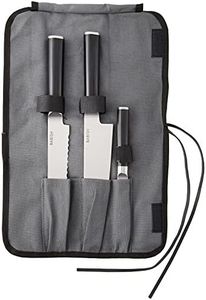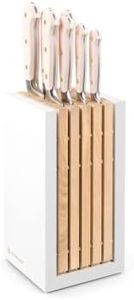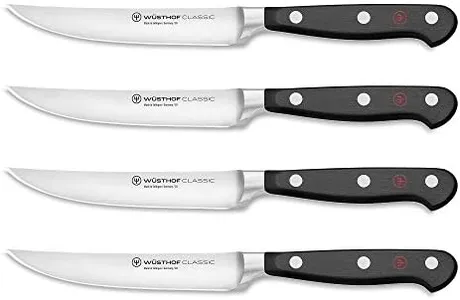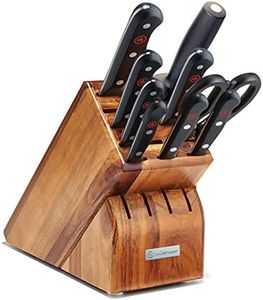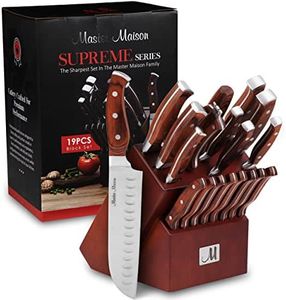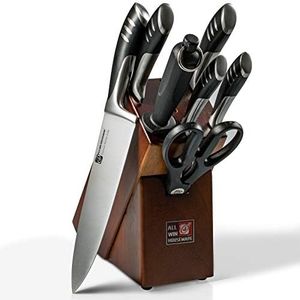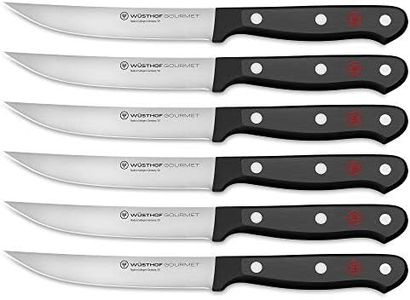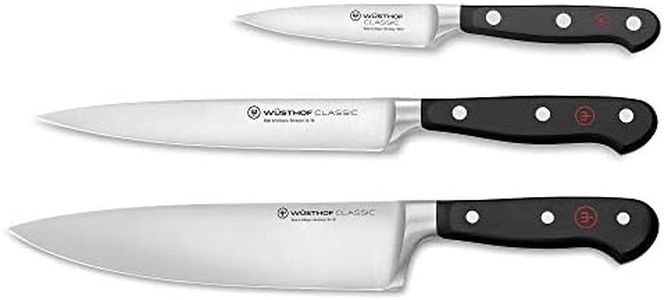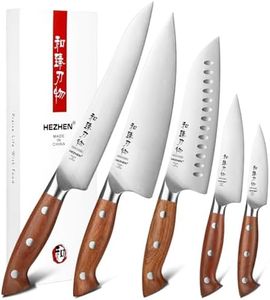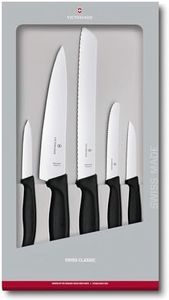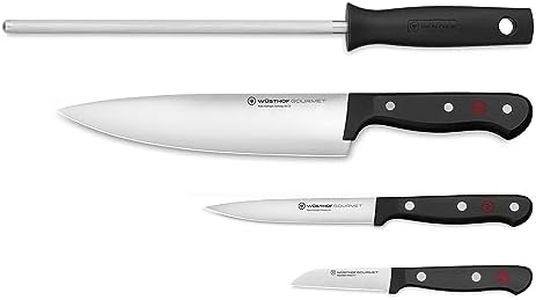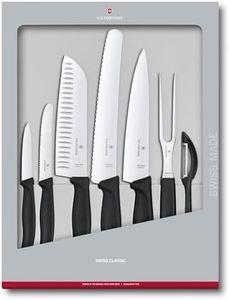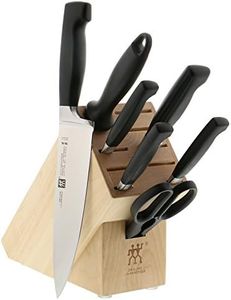We Use CookiesWe use cookies to enhance the security, performance,
functionality and for analytical and promotional activities. By continuing to browse this site you
are agreeing to our privacy policy
10 Best German Knife Set
From leading brands and best sellers available on the web.Buying Guide for the Best German Knife Set
Buying a German knife set is an exciting step for anyone who enjoys cooking, whether as a beginner or as a passionate home chef. German knives are celebrated for their balance of sturdiness, sharpness, and comfortable handling, making them excellent tools for many kitchen tasks. When shopping for a German knife set, it's important to understand what sets these knives apart and which features truly matter for your cooking style and needs. A good knife set enhances your efficiency and safety in the kitchen, so it's worthwhile to take some time to consider the key aspects before making your choice.Steel TypeSteel type refers to the material used to make the blade. In German knives, you'll typically encounter high-carbon stainless steel, which combines sharpness with resistance to rust and stains. The steel type matters because it affects both durability and maintenance; a harder steel tends to hold its edge longer but might be tougher to sharpen, while softer steels are easier to maintain but may need sharpening more frequently. Common segments include standard stainless steel (easy to maintain, decent sharpness), high-carbon steel (sharper edge retention, more care needed), and proprietary blends offered by some brands. If you want low-maintenance knives that you don't mind sharpening more often, standard stainless might work well. If you value long-lasting sharpness and don't mind extra care (like drying after use), high-carbon offerings are ideal.
Blade ConstructionBlade construction points to how the blade is forged or stamped. Forged blades are made from a single piece of steel, heated and then shaped, resulting in a stronger, thicker, and typically heavier knife with good balance. Stamped blades are cut from a sheet of metal and are lighter and more flexible but generally not as robust as forged ones. For most home cooks, forged knives offer better control and longevity, but if you prefer something lightweight or plan to use knives for lots of slicing, stamped knives could be a fit. It's a matter of how much weight and durability you want in each knife.
Handle MaterialHandle material is what the knife handle is made from and greatly impacts comfort, grip, and durability. Common materials include wood (classic look, good grip but requires maintenance), plastic or synthetic composites (durable, low-maintenance, variety of shapes), and metal (very durable, can be heavier and sometimes slippery). For frequent use, synthetic handles often offer the best mix of comfort, hygiene, and durability. If aesthetics and traditional feel matter to you and you're prepared for a little extra care, wood might be appealing.
Set CompositionSet composition simply means which and how many knives are included in the set. A basic set might have three essentials (chef, paring, bread knife), while larger sets include specialty knives like a santoku, boning, or utility knife, plus extras such as kitchen shears or sharpening steel. Your cooking style should guide this choice: if you only do basic prep, a smaller set keeps things simple; if you love exploring different kitchen techniques or cook for a crowd, a more comprehensive set will give you the right tool for every job.
Balance and WeightBalance and weight influence how comfortable and effective a knife feels in your hand. German knives are usually designed for a heavy, balanced feel, which can make chopping and rocking motions easier. Lighter knives are easier to handle for long periods but may lack the 'heft' that helps power through tougher foods. Consider how a knife feels in your hand—if you tend to get hand fatigue, lighter might be better, but for solid, confident cuts, a heavier, well-balanced knife is preferred.
Maintenance and CareMaintenance and care relate to how much effort is needed to keep your knives in good condition. Factors include whether knives are dishwasher-safe (most German knives are best hand-washed), how often they'll need sharpening, and how resistant they are to rust or stains. If you're willing to invest time in washing and drying by hand and using a honing steel, virtually any German knife will serve you well. If you want less fuss, look for sets marketed as low-maintenance, but always remember that proper care extends the life and performance of your knives.
